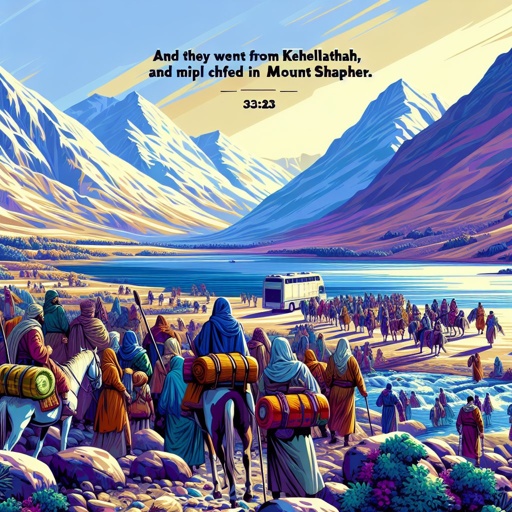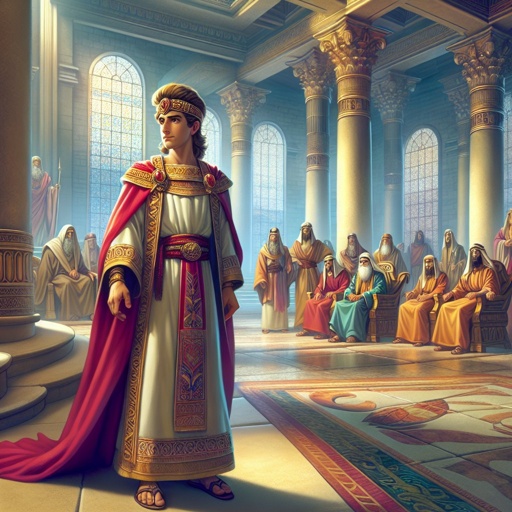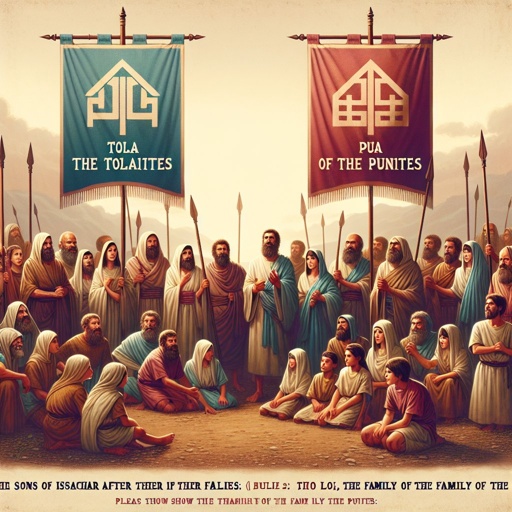What does Numbers 23:1 mean?
"And Balaam said unto Balak, Build me here seven altars, and prepare me here seven oxen and seven rams." - Numbers 23:1

Numbers 23:1 - "And Balaam said unto Balak, Build me here seven altars, and prepare me here seven oxen and seven rams."
The Book of Numbers in the Hebrew Bible, also known as the Old Testament, offers a complex tapestry of historical accounts, laws, and religious teachings. The verse Numbers 23:1, as it appears in the King James Version (KJV), reads:
"And Balaam said unto Balak, Build me here seven altars, and prepare me here seven oxen and seven rams."
This verse is found within the larger context of the story of Balaam and Balak. Balak, the king of Moab, had become fearful of the Israelites and their growing power. In an effort to protect his kingdom, he sought the assistance of Balaam, a non-Israelite prophet who was known for his ability to bless or curse people through his divine connection with God. Balak believed that Balaam's curses could weaken the Israelites and allow Moab to prevail over them.
When Balak first approached Balaam to curse the Israelites, Balaam consulted with God and received a clear message forbidding him from cursing the Israelites, as they were blessed and favored by God. Despite Balak's insistence and offers of great wealth and honor, Balaam remained faithful to God and refused to curse the Israelites.
In Numbers 23:1, we see Balaam instructing Balak to build seven altars and prepare seven oxen and seven rams. This action represents Balaam's continued attempt to seek God's will and gain an understanding of how to navigate the situation. The number seven in biblical symbolism often represents completion or totality, as seen in the seven days of creation in Genesis. Balaam is signaling to Balak that he is seeking a complete and final answer from God.
The act of building altars and offering sacrifices was a common way for ancient peoples to seek favor with their gods. In this context, Balaam's instructions to Balak can be interpreted as a sign of Balaam's commitment to following God's guidance and seeking divine wisdom in his actions. Balaam was not willing to rely on his own abilities or the desires of Balak, but instead sought to align himself with God's will through these symbolic acts.
This verse also highlights the ongoing tension between the earthly power of Balak and the divine authority of God. Balak's attempts to manipulate and control Balaam stand in contrast to Balaam's commitment to seeking God's guidance above all else. This theme points to the broader biblical theme of the struggle between human ambition and the will of God.
The story of Balaam and Balak holds significance beyond its historical context, as it also serves as a moral lesson for readers. Balaam's unwavering commitment to God's commandments, despite the temptations and pressures he faced, serves as a model of steadfast faith and obedience. The story emphasizes the importance of seeking God's guidance and remaining faithful to His will, even in the face of adversity.
In the larger context of the Book of Numbers, this verse serves as a pivotal moment in the narrative, as it sets the stage for the unfolding of Balaam's interactions with God and the consequences of his choices. Ultimately, Balaam's story serves as a warning against compromising one's faith and values for worldly gain, and underscores the importance of remaining true to one's spiritual convictions.
In summary, Numbers 23:1 encapsulates the broader themes of faithfulness, obedience, and the struggle between earthly power and divine authority. The verse symbolizes Balaam's unwavering commitment to seeking God's guidance and serves as a moral lesson for readers about the importance of remaining faithful to God's will despite the pressures and temptations of the world.
Numbers 23:1 Artwork

Numbers 23:1 - "And Balaam said unto Balak, Build me here seven altars, and prepare me here seven oxen and seven rams."

Numbers 1:23 - "Those that were numbered of them, even of the tribe of Simeon, were fifty and nine thousand and three hundred."

Numbers 16:23 - "¶ And the LORD spake unto Moses, saying,"

Numbers 8:23 - "¶ And the LORD spake unto Moses, saying,"

Numbers 33:23 - "And they went from Kehelathah, and pitched in mount Shapher."

Numbers 3:23 - "The families of the Gershonites shall pitch behind the tabernacle westward."

1 Chronicles 12:23 - "¶ And these are the numbers of the bands that were ready armed to the war, and came to David to Hebron, to turn the kingdom of Saul to him, according to the word of the LORD."

Numbers 10:23 - "And over the host of the tribe of the children of Manasseh was Gamaliel the son of Pedahzur."

Numbers 34:23 - "The prince of the children of Joseph, for the tribe of the children of Manasseh, Hanniel the son of Ephod."

Numbers 23:28 - "And Balak brought Balaam unto the top of Peor, that looketh toward Jeshimon."

Numbers 23:22 - "God brought them out of Egypt; he hath as it were the strength of an unicorn."

Numbers 23:30 - "And Balak did as Balaam had said, and offered a bullock and a ram on every altar."

Numbers 23:23 - "Surely there is no enchantment against Jacob, neither is there any divination against Israel: according to this time it shall be said of Jacob and of Israel, What hath God wrought!"

Numbers 2:23 - "And his host, and those that were numbered of them, were thirty and five thousand and four hundred."

Numbers 26:23 - "¶ Of the sons of Issachar after their families: of Tola, the family of the Tolaites: of Pua, the family of the Punites:"

Numbers 28:23 - "Ye shall offer these beside the burnt offering in the morning, which is for a continual burnt offering."

Numbers 20:23 - "And the LORD spake unto Moses and Aaron in mount Hor, by the coast of the land of Edom, saying,"

Numbers 23:20 - "Behold, I have received commandment to bless: and he hath blessed; and I cannot reverse it."

Acts 1:21-23

Numbers 5:23 - "And the priest shall write these curses in a book, and he shall blot them out with the bitter water:"

Numbers 29:23 - "¶ And on the fourth day ten bullocks, two rams, and fourteen lambs of the first year without blemish:"

Numbers 23:2 - "And Balak did as Balaam had spoken; and Balak and Balaam offered on every altar a bullock and a ram."

Numbers 23:25 - "¶ And Balak said unto Balaam, Neither curse them at all, nor bless them at all."

1 Chronicles 23:23 - "The sons of Mushi; Mahli, and Eder, and Jeremoth, three."

Numbers 24:23 - "And he took up his parable, and said, Alas, who shall live when God doeth this!"

Numbers 27:23 - "And he laid his hands upon him, and gave him a charge, as the LORD commanded by the hand of Moses."

Numbers 23:5 - "And the LORD put a word in Balaam's mouth, and said, Return unto Balak, and thus thou shalt speak."

Numbers 23:12 - "And he answered and said, Must I not take heed to speak that which the LORD hath put in my mouth?"

Numbers 23:6 - "And he returned unto him, and, lo, he stood by his burnt sacrifice, he, and all the princes of Moab."

1 Chronicles 23:24 - "¶ These were the sons of Levi after the house of their fathers; even the chief of the fathers, as they were counted by number of names by their polls, that did the work for the service of the house of the LORD, from the age of twenty years and upward."